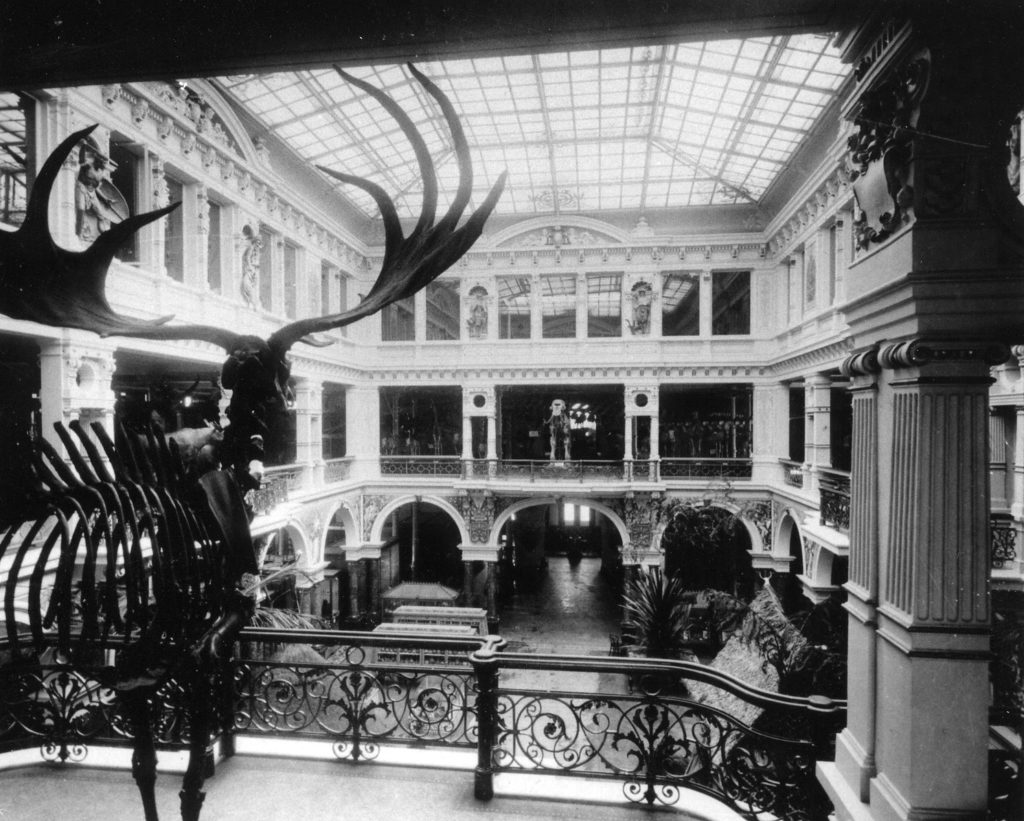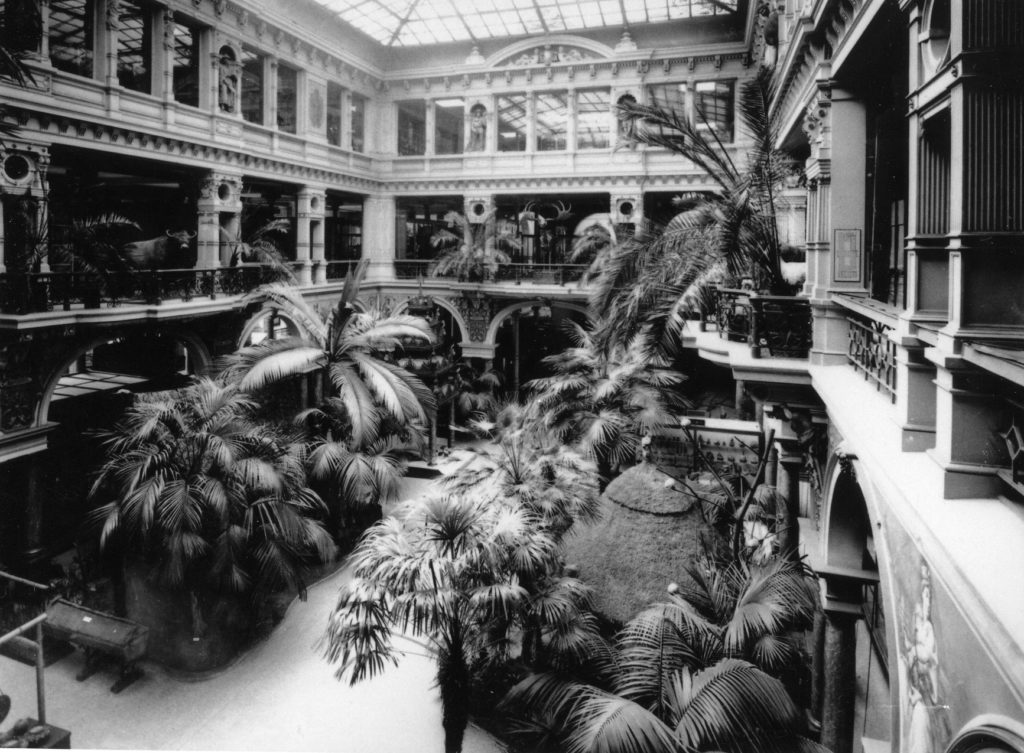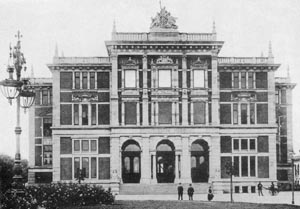History of the Geosciences Collection
People have been collecting fossils, minerals, interesting looking rocks and sea-shells since in prehistoric times. These specimens were of great importance as becames clear from their usage as jewellery and burial objects. The Greek philosopher and universal genius Aristoteles owned a collection of specimens from the field of natural history back in the 4th century. Later the general interest in natural history became less and it was not until the Renaissance in the 14th century that collections were built up across the whole of Europe. In the wealthy part of society it became fashionable to study and catalogise specimens and to house them in so-called natural history cabinets and collections of curiosities. In those days collecting specimens was a private passion, but not a task to collect for the general public.

Its world-wide trading relations made the Hanseatic city of Bremen into a centre for these collecting activities, that were especially intensive in English and Dutch cities. Approximately since the 17th century collecting of specimens has been more serious and focussed to collect material from a more scientific point of view that we know from today. The begining of the Geosciences Collection dates back to this time. In the mid 17th century the first geoscientific specimens were housed together with many other objects in the field of natural history in the of the city of Bremen. Since the foundation of the Städtische Sammlungen für Naturgeschichte und Ethnographie (Collections for natural history and ethnography of the city), that existed between 1876-1890, the collections have belonged to the city of Bremen. This was a general trend across Europe, when many cabinets of natural history of the 15th to 17th century disappeared and formed the bases for newly founded museums.


The two focuses natural history and ethnology still exist today in the city of Bremen, although the name of the museum has changed several times until recently it was named Übersee-Museum. The recent Geosciences Collection of the university of Bremen comprises mainly of the historically grown collection of geoscientific specimens as well as shells of modern molluscs that were a part of the Übersee-Museum. In 1994 the collection moved from the Übersee-Museum to the University of Bremen. As a consequence no specimens are on display in a permanent exhibition any longer, except for special exhibitions that are shown irregularly. On the campus the largest part of the collection moved to the Marum building that has been completed early in 2005, corresponding to its significant status. The work in the collections concentrates more on the extension and care of a collection for research purposes, including scientific excavations.
Since 1994 the collection has expanded steadily for many reasons, but mainly by the accumulation of research material from the Faculty of Geosciences. Private collectors or researchers as well as people that are interested in natural history still play in important role in enlarging the collection, in recent days mainly by the members of the Geowissenschaftlichen Arbeitskreises
